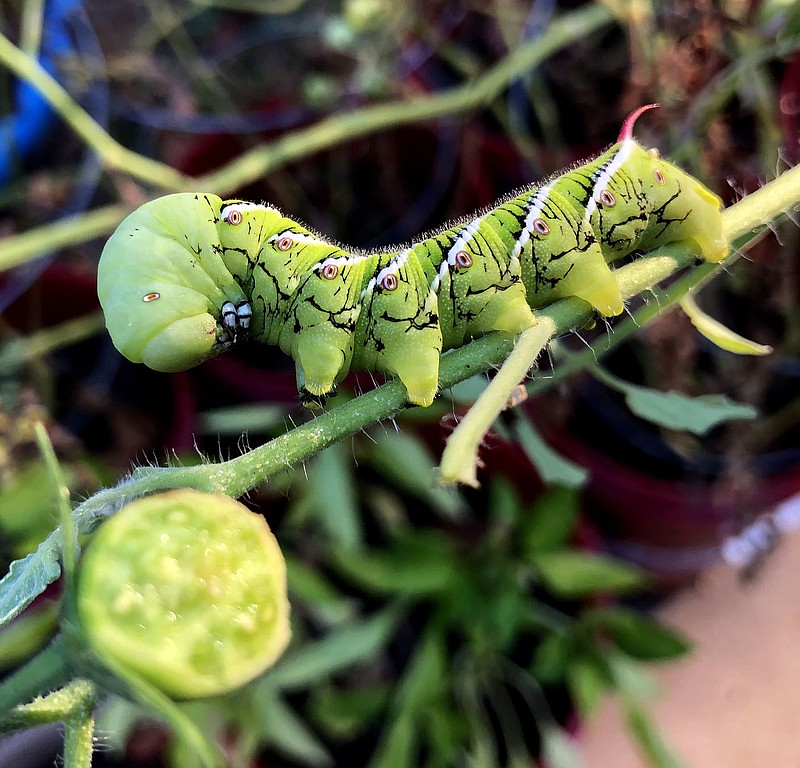WESTSIDE -- Tomatoes, both leaves and fruit, are a favorite food of the tomato hornworm, and the catepillars can destroy plants and fruit.
Large brownish-gray moths lay their eggs on the tomato plant and catepillars are hatched which can grow up to 3 or 4 inches in length. After feeding on the plants, the catepillars drop off the plants and burrow into the soil to transform into pupae. Moths emerge in two weeks to begin a second generation during midsummer, repeating the cycle.
The large caterpillars feed until late summer or early fall and then pupate, with the pupae remaining in the soil through the winter and new moths emerging in the spring.
The best remedy is to watch for damage to plants and pysically remove and destroy the catepillars.

